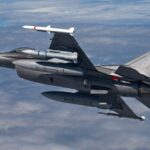By Emelie Rutherford A panel finalizing a report on alternatives for future NASA human spaceflight has decided on four options it will present the White House, with only one of those scenarios calling for continuing development of the Ares I rocket and Orion crew capsule. Members of the Review of U.S. Human Space Flight Plans Committee said during their final public hearing Wednesday that because of NASA budget cuts and technical-related delays the Constellation program cannot be executed. This space-shuttle replacement effort was…
Contract Updates
Oshkosh Defense LLC (Oshkosh, Wisconsin) – $29,432,585
Oshkosh Defense LLC, Oshkosh, Wisconsin, has been awarded an estimated $29,432,585 firm-fixed-price, indefinite-delivery/indefinite-quantity contract for steering gears. This was a sole-source acquisition using justification 10 U.S. Code 3204 (a)(1), as stated in Federal Acquisition Regulation 6.302-1. This is a three-year…
Propper International Inc. (Cabo Rojo, Puerto Rico) – $48,380,842
Propper International Inc., Cabo Rojo, Puerto Rico, has been awarded a maximum $48,380,842 fixed-price, indefinite-delivery/indefinite-quantity contract for flame resistant pants. This was a competitive acquisition with four responses received. This is a one-year contract with no option periods. The ordering…
Northrop Grumman Systems Corp. (Rolling Meadows, Illinois) – $50,000,000
Northrop Grumman Systems Corp., Rolling Meadows, Illinois, was awarded a $50,000,000 modification (P00033) to a previously awarded contract (FA8540-19-D-0001) for LITENING CATP program. This modification brings the total face value of the contract to $1,360,000,000 from $1,310,000,000. This action does…
World Wide Technology LLC (St. Louis, Missouri) – $15,285,426
World Wide Technology LLC, St. Louis, Missouri, is awarded a $15,285,426 firm-fixed-price contract. This effort procures Information Technology hardware and software in support of the Program Executive Office Digital Enterprise Services, Webster Outlying Field Integrated Command, Control and Intel Systems…













